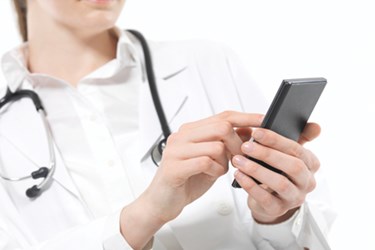Building A Better Healthcare App
By Megan Williams, contributing writer

According to a report co-authored by Murray Aiken, executive director of the IMS Institute of Healthcare Informatics, of the 43,700 medical apps available in the Apple store, about 46 percent aren’t actual healthcare apps.
What’s more, only 159 have the ability to track or capture data entered by the user. For app developers interested in getting involved in the market, this means creating truly effective apps in a market dominated by major players like Merck and Pfizer will take being mindful of some best practices and policies around their app development.
Best Practices: Development
For some starting points, the HTML Goodies website provides a list of best practices that can be adapted to fit healthcare environments.
- Consider Your Audience. This needs to happen before development starts. What are you trying to achieve? Will users find out about your app through providers, the Internet, or direct contact from you? Are you talking to users with a specific health issue, and if so, have you consulted all the proper authorities to make sure your development process is geared both toward clinical and lifestyle realities?
- Check The App Stores. Some conditions, like diabetes and heart issues, have heavy coverage when it comes to app development. This though, doesn’t mean that there isn’t room for innovation — most existing healthcare apps are heavily geared toward pure information and the market is still waiting for apps that actively solve health problems.
- Involve Stakeholders. This is an important recommendation in other industries, but it’s absolutely essential in healthcare. Not only are users’ lives and health at stake, but you also have patient privacy and data security issues to navigate, even if you aren’t technically covered by the many regulations out there.
- Keep It Simple. Healthcare is already a confusing and frustrating landscape to navigate. There’s no need to add another level of complexity to the experience, so keeping apps organized (through storyboards) and clutter free (by avoiding overuse of graphics and animations), will make the user experience much more enjoyable. Additionally, the app should be easy to understand, with use of descriptions to accompany graphics and additional instructions when helpful. Whether you’re dealing with burn patients or surgeons, clear instructions are invaluable.
- Get A Second Opinion. This means from potential users, from clinicians, public health experts, mobile professionals … anyone who could possibly help you refine your process and product.
Best Practices: Privacy And Security
Patient data privacy and security can’t be stressed enough. Check out these seven pieces of advice from Future Of Privacy and the Center For Democracy And Technology.
- Practice Privacy By Design. Be proactive. Ask important questions and embed privacy measures throughout the lifecycle of your product or service.
- Communicate Openly & Effectively. Have a comprehensive and transparent privacy policy covering all of your data collection, sharing, and use practices. Use clear and simple language.
- Make Your Privacy Policy Easily Accessible. Don’t make users search for your privacy policy – make it prominent and easy to find.
- Use Enhanced Notice. Don’t surprise users – have respect for context. Use enhanced notice in situations where users might not expect certain data to be collected.
- Provide Users With Choices And Controls. Empower users. Allow them to choose and control the way their data is collected and used.
- Secure Your Users’ Data! Always use appropriate and up-to-date security measures to protect user data.
- Ensure Accountability. Make sure someone is in charge! Designate a privacy guru, or make sure to explicitly assume the responsibility yourself.
Solutions providers interested in app development will find it beneficial to stay on top of developments in mobile healthcare overall. You can do that by keeping up with our work on mobile health here on our website.
